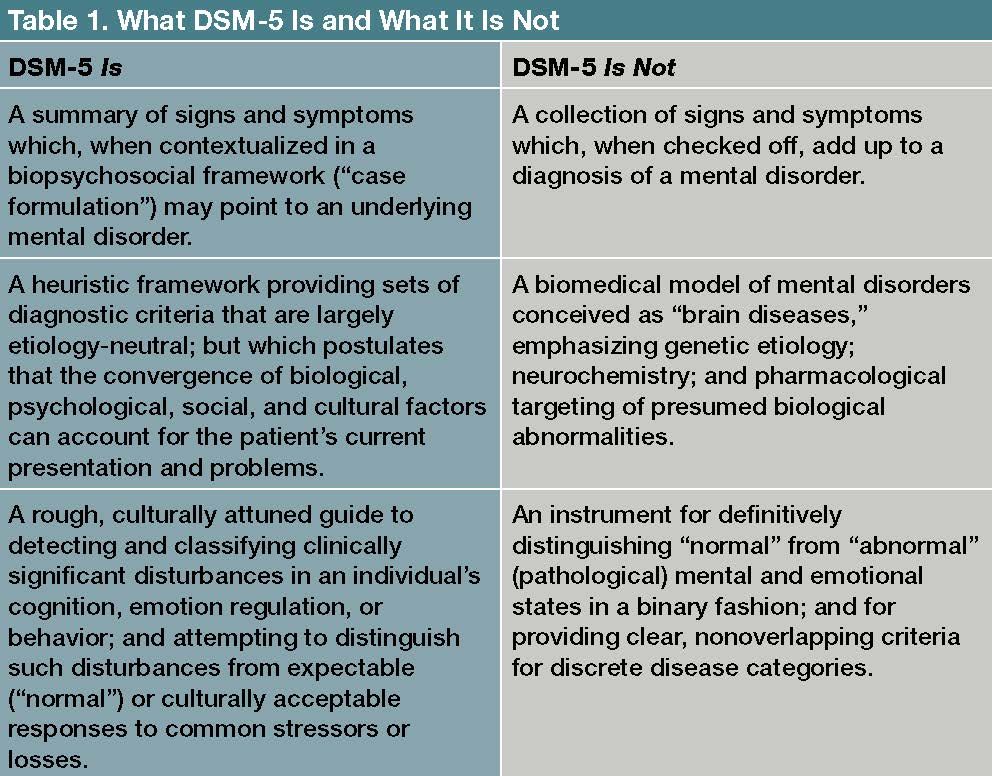Describe at Least Three Uses of the Dsm-5
Up to 3 cash back The DSM5 revises the classifications and diagnostic criteria of substance use and psychiatric disorders with in some case substantial reconceptualization from DSMIVTR. This loss of memory cannot be the result of substance use a neurological or medical condition or brain injury.

Derivation Of Dsm 5 Borderline Personality Disorder Type Download Table
Apply at least three of the new DSM-5 diagnostic criteria for SUDs using fictitious case scenarios.
. Learn more about some of the new organization and features of the DSM5-TR below. Strengths of the Diagnostic and Statistical Manual of Mental Disorders include that it provides a well designed standard and comprehensive diagnostic tool for clinicians and. Eating disturbance manifested by persistent failure to meet nutritional needs.
Emotionally withdrawn behavior toward caregiver. Recurrent alcohol use resulting in a failure to fulfill major role obligations at work school or home. Summarize at least three organizational changes to the DSM-5.
Substance use disorder is a combination of DSM-IVs substance. Identify and describe the etiology of the DSM 5 diagnosis. For example the elimination of the multiaxial diagnostic system and Global Assessment of Functioning GAF scores.
Learning Objectives By the end of this course will be able to. The DSM-5 revises the classifications and diagnostic criteriaof substance use and psychiatric disorders with in some cases substantial reconceptualization from DSM-IV-TR. The presence of two or more distinct personality states that may be.
Only three studies used the current published DSM-5 criteria9 1113 the others used draft versions from either 20107 or. Each diagnosis includes a diagnostic code which is. The Diagnostic and Statistical Manual of Mental Disorders Fifth Edition is the 2013 update to the Diagnostic and Statistical Manual of Mental Disorders the taxonomic and diagnostic tool published by the American Psychiatric Association.
SECTION I-BASICS Organizational Structure Harmonization with ICD -11 International Classification of Disease DSM-5 and proposed structure of ICD -11 are working toward consistency ICD-10 is scheduled for US implementation in October 2014 ICD-9 codes are used in DSM -5 Dimensional Approach to Diagnosis Previous DSMs considered each diagnosis. The diagnostic classification the diagnostic criteria sets and the descriptive text. To assist both clinical and administrative staff in.
Outline the Anatomy of an ICD code and what kind of information each character in the code provides. In the United States the DSM serves as the principal authority for psychiatric diagnoses. As with other disorders the.
State the essential diagnostic criteria and risk factors for the major depressive disorder bipolar disorder PTSD. Select one clientconsumer from your fieldwork placement. Describe at least three major changes to diagnostic criteria of SUDs in the DSM-5.
Somatic symptom disorder largely takes the place of somatization disorder hypochondriasis pain disorder and undifferentiated somatoform disorder although many individuals previously diagnosed with hypochondriasis will now meet criteria for illness anxiety disorder new to DSM-5. Discuss at least three different disorders or classes of disorders that are in either the DSM or the ICD and are not in the other 3. The DSM consists of three major components.
DSM consists of three major components. The following are the DSM-5 diagnostic criteria for Opioid Use Disorder 1. DSM-5 Criteria for Opioid Use Disorder Description.
Identify and describe the cultural related diagnostic issues of the DSM 5 diagnosis. The diagnostic classification is the official list of mental disorders recognized in DSM. Dissociative Identity Disorder formerly known as Multiple Personality Disorder Dissociative Amnesia and DepersonalizationDerealization Disorder.
A problematic pattern of opioid use leading to clinically significant impairment or distress as manifested by at least two of the following occurring within a 12-month period. Four studies compared the use of DSM-IV-TR and DSM-5 diagnostic criteria on the same contemporaneous sample10-13 and one conducted a meta-analysis14 of studies that used both contemporaneous and retrospective approaches. Highlights of Changes from DSM-IV-TR to DSM-5 3 removed due to the nonspecificity of Schneiderian symptoms and the poor reliability in distinguishing bizarre from nonbizarre delusions.
Describe at least three differences between the DSM and the ICD 2. DSM-III and DSM-III-R included only brief reports of age of onset and sex ratio for many disorders. Therefore in DSM-5 two Criterion A symptoms are required for any.
Usually the amnesia is related to traumatic or stressful events. Identify at least three different. AvoidantRestrictive Food Intake Disorder.
Individual must have at least one of these three symptoms. Treatment recommendations as well as payment. Continued alcohol use despite having persistent or recurrent social or interpersonal problems caused or exacerbated by the effects of alcohol.
The diagnostic classification the diagnostic criteria sets and the descriptive text American Psychiatric Association 2003. Using DSM-5 diagnose the client using a multidimensional diagnostic approach. According to the DSM-5 people with dissociative amnesia are unable to remember personal information or events in their lives that most people would be able to remember.
Recurrent skin picking resulting in skin lesions. For example the elimination of the multiaxial diagnostic system and Global Assessment of Functioning GAF scores. In my previous blog The Missing Person in the DSM I questioned whether the DSM diagnostic manual classifies psychiatric disorders or the individuals suffering from diagnostic disorders-Ms Smiths bipolar disorder or Ms Smith a person with bipolar disorderI noted that following medical tradition the manual classifies diseases-not surprising since in a medical.
Describe at least three ways that DSM-5s organizational structure and diagnostic information can inform case formulation and treatment planning. Identify and describe the diagnostic criteria and clinical features of the DSM 5 diagnosis. Write a brief paragraph describing clients demographic information and reason for relationship with agency.
Narrow First Sirovatka Regier 2007. DSM-5 greatly increased the emphasis on the developmental gender-related and cultural aspects of diagnostic criteria and textual descriptions of individual disorders Alarcón et al 2002. Identify and describe the epidemiology of the DSM 5 diagnosis.


No comments for "Describe at Least Three Uses of the Dsm-5"
Post a Comment